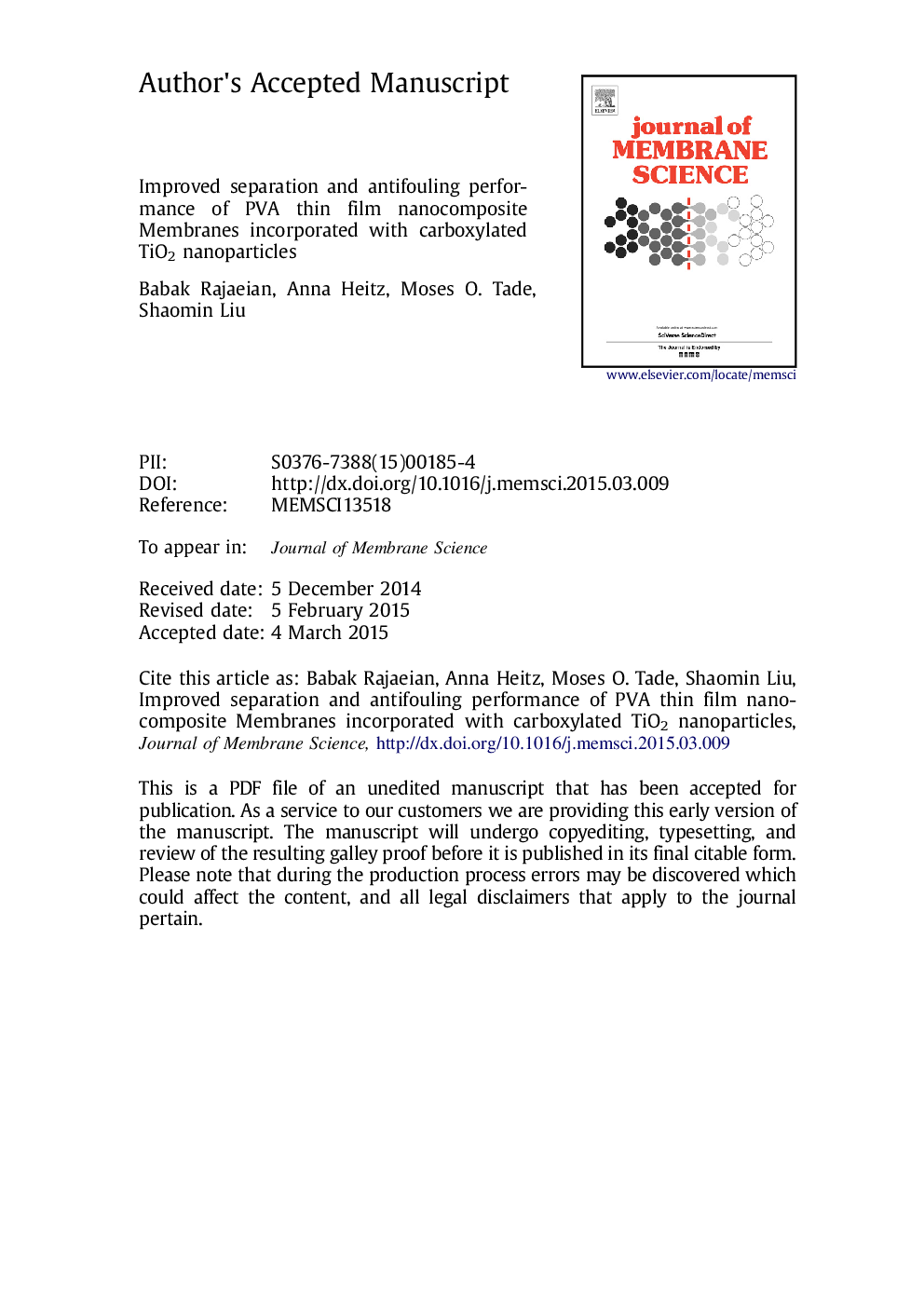| Article ID | Journal | Published Year | Pages | File Type |
|---|---|---|---|---|
| 7021421 | Journal of Membrane Science | 2015 | 42 Pages |
Abstract
In this study, a series of thin film nanocomposite membranes was developed by coating a surface-modified porous poly (vinylidene fluoride) (PVDF) support with poly (vinyl alcohol) (PVA) doped solution containing TiO2 nanoparticles. In order to improve the interfacial adhesion of nanoparticles in the PVA blend, an endothermic carboxylation reaction under acidic conditions was carried out on the TiO2 surface using chloroacetic acid. Electron microscopy studies identified various topographies upon functionalization of the coating and incorporation of TiO2 nanoparticles. The carboxylation of TiO2 nanoparticles promoted particle dispersion within the PVA doped solution with significantly reduced particle agglomeration, demonstrating a potential solution to a significant difficulty in the synthesis of state-of-the-art nanocomposite membranes. Furthermore, the carboxylate functional groups on the TiO2 surface facilitated a strong interfacial crosslinking reaction with the hydroxyl groups in the PVA chains, conferring excellent interface integration between the nanoparticle and the polymer matrix. The high performance of this new carboxylated thin film nanocomposite membrane is evidenced by the improved membrane performance including solute rejection, antifouling properties and flux recovery ratio.
Related Topics
Physical Sciences and Engineering
Chemical Engineering
Filtration and Separation
Authors
Babak Rajaeian, Anna Heitz, Moses O. Tade, Shaomin Liu,
